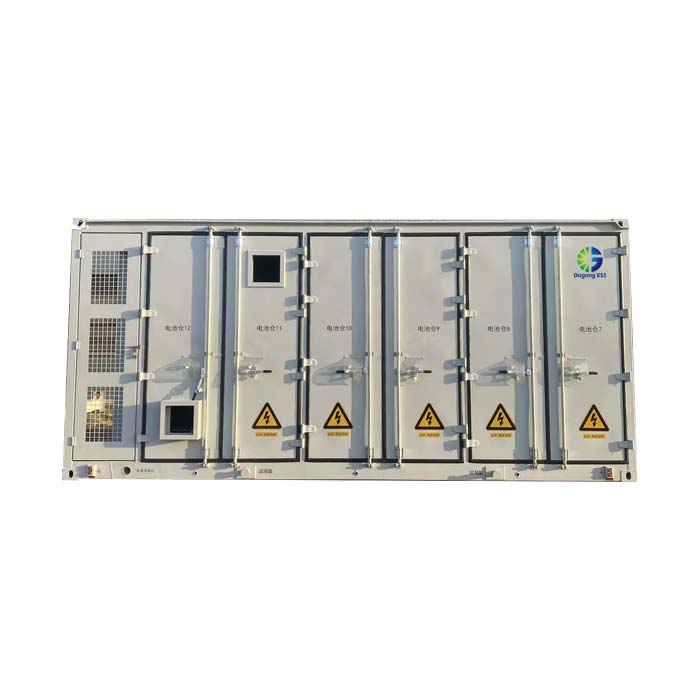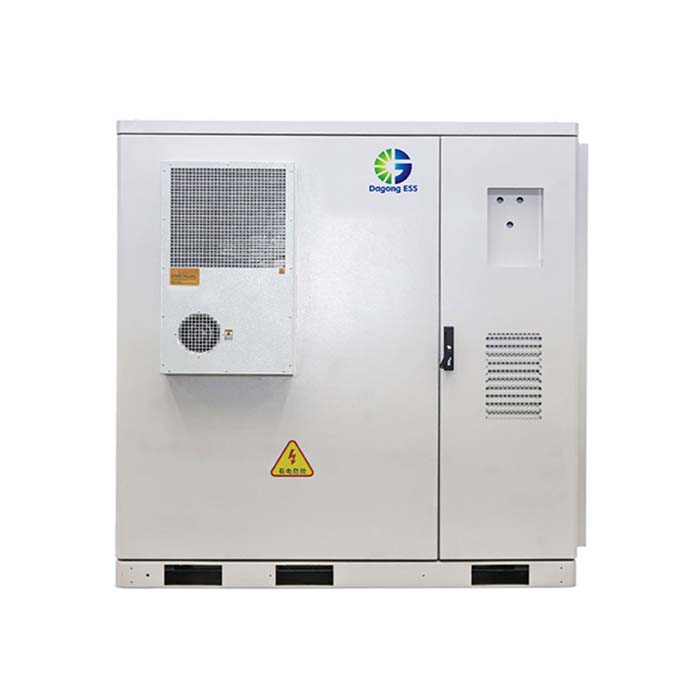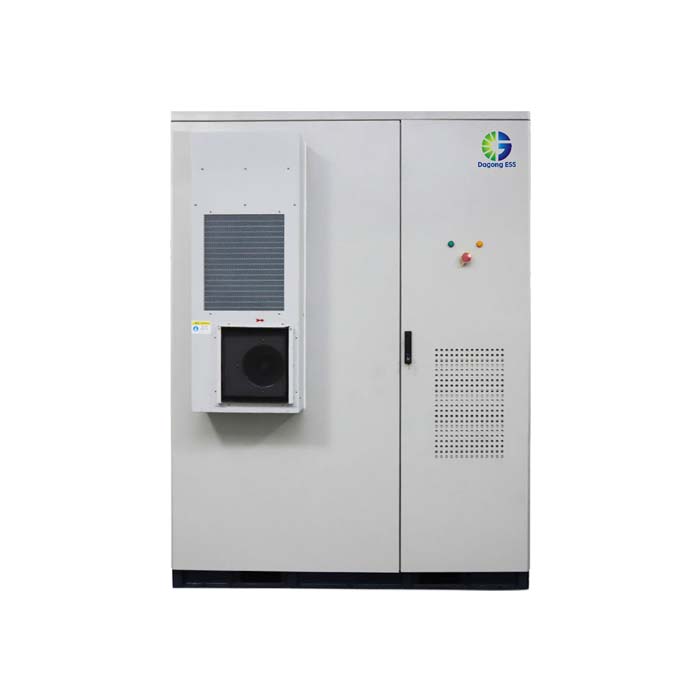What Are the Differences Between Centralized and String-Type ESS in Parallel C&I Projects?
What Is a Centralized ESS Architecture?
A centralized C&I ESS integrates battery modules into one large DC bus and uses a single high-power PCS (power conversion system) to handle energy conversion. In parallel projects, multiple battery cabinets share the same PCS, and the control system manages charge/discharge tasks collectively.
Key Characteristics
One PCS, multiple battery packs
Unified BMS/EMS scheduling
Lower PCS redundancy but higher power density
Simplified grid connection point
Typical in industrial peak-shaving projects
Centralized designs are commonly used in large-capacity C&I systems such as 215–241kWh air-cooled ESS or 372kWh liquid-cooled cabinets operating as part of a shared power block.
What Is a String-Type ESS Architecture?
A string-type ESS equips each battery module or cabinet with its own PCS or smaller PCS units, allowing each unit to run independently. When parallel operation is required, each string communicates with the EMS through distributed control logic.
Key Characteristics
PCS per cabinet or per module
High redundancy and high operational flexibility
Independent MPPT-like operation for each string
Easily scalable by adding more cabinets
Lower fault impact on overall system
String-type designs are increasingly popular in distributed C&I projects and microgrids, especially with modular systems similar to 100–144kWh air-cooled ESS units.
Key Differences Between Centralized and String-Type ESS in Parallel Applications
1. System Architecture
| Item | Centralized ESS | String-Type ESS |
|---|---|---|
| PCS Structure | One large PCS | Many smaller PCS units |
| Battery Topology | Shared DC bus | Independent DC strings |
| Redundancy | Low | High |
| Failure Impact | A single PCS fault affects whole system | Only one string affected |
Best Use Case
Centralized → large industrial power blocks
String-type → flexible, modular deployments
2. Control Logic & EMS Interaction
Centralized ESS uses one centralized control unit, simplifying scheduling but reducing independence.
String-type ESS uses distributed PCS control, giving each cabinet autonomous decision-making for charging/discharging, similar to PV string inverters.
Result:
Centralized → easier integration but lower adaptability
String-type → higher precision and better balancing between strings
3. Parallel Operation Characteristics
Parallel operation in C&I ESS must consider current balancing, power sharing, and voltage stability.
Centralized Parallel
Parallel only at the DC or battery cabinet level
PCS handles all power balancing
More sensitive to SOC and resistance differences
Requires strict uniformity among battery packs
String-Type Parallel
Each PCS controls its own current
No risk of DC bus imbalance
Compatible with different capacities or aging conditions
Supports smoother expansion
This is why string-type ESS is often chosen for expansion projects or sites that expect gradual capacity increases.
4. Installation & Commissioning
Centralized ESS:
Faster centralized wiring
Requires heavy PCS installation
Commissioning is more complex due to high-power PCS
String-type ESS:
More cables but lighter equipment
Each PCS auto-configures
Faster commissioning for modular C&I ESS
5. Operation & Maintenance Costs
Centralized ESS O&M
Lower PCS count = lower maintenance cost
PCS failure causes large system downtime
Requires more specialized technicians
String-Type ESS O&M
Multiple PCS units require more inspection
PCS failure is isolated—system keeps operating
Easier troubleshooting and hot-swapping
6. Safety & Fault Isolation
Centralized:
A failure in PCS or DC bus can impact multiple battery groups.
String-type:
Each string can be fully isolated by contactors, improving safety performance. This is compatible with liquid-cooled systems like 215kWh or 372kWh systems where module-level protection is critical.
Application Scenarios in Real C&I Projects
Centralized ESS is ideal for:
Industrial parks with stable load patterns
Manufacturing peak shaving
Utility-connected power blocks
Sites requiring higher instantaneous power
String-Type ESS is ideal for:
Retail & commercial buildings
Industrial users requiring redundancy
Southeast Asia microgrids
European sites with strict grid compliance
North American modular ESS projects requiring scalability
In many export markets, parallel string-type ESS is favored because of easier installation, better unit independence, and simpler compliance with local grid regulations.
Why Both Architectures Matter in Global ESS Export Projects?
Different markets show different trends:
Europe
Strong preference for modular, string-type systems
EU grid codes require high fault tolerance
North America
Hybrid models common
Liquid-cooled centralized blocks used for utility-scale systems
Southeast Asia
Microgrids prefer string-type
Rapid load growth makes scalable systems valuable
Manufacturers offering both air-cooled and liquid-cooled ESS solutions—such as 100–144kWh modular air-cooled units, 215–241kWh C&I systems, and 372kWh liquid-cooled modules—are well positioned to support these distinct market needs.
Price Factors for Centralized vs String-Type ESS
Price differences depend on:
PCS quantity
Cooling system (air vs liquid)
Battery capacity and type (LFP preferred)
Communication topology
Installation labor
Local grid certification requirements
For international projects, buyers typically request a full technical proposal before pricing because costs vary by country, certification, and configuration.
How Long Do These Systems Last?
Both centralized and string-type ESS using high-quality LFP batteries generally deliver:
8000+ cycles
15+ years service life
Lower degradation in liquid-cooled designs
Long-term reliability in high-temperature environments
Conclusion
In parallel C&I storage projects, centralized and string-type ESS architectures each offer unique advantages:
Centralized = high power density, unified management
String-type = strong redundancy, flexible deployment, easier expansion
As global demand rises in Europe, North America, and Southeast Asia, both structures will continue playing important roles in peak shaving, energy shifting, microgrids, and industrial energy optimization.
If you are interested in centralized or string-type ESS solutions, feel free to contact Dagong ESS at sales@dagongess.com.








